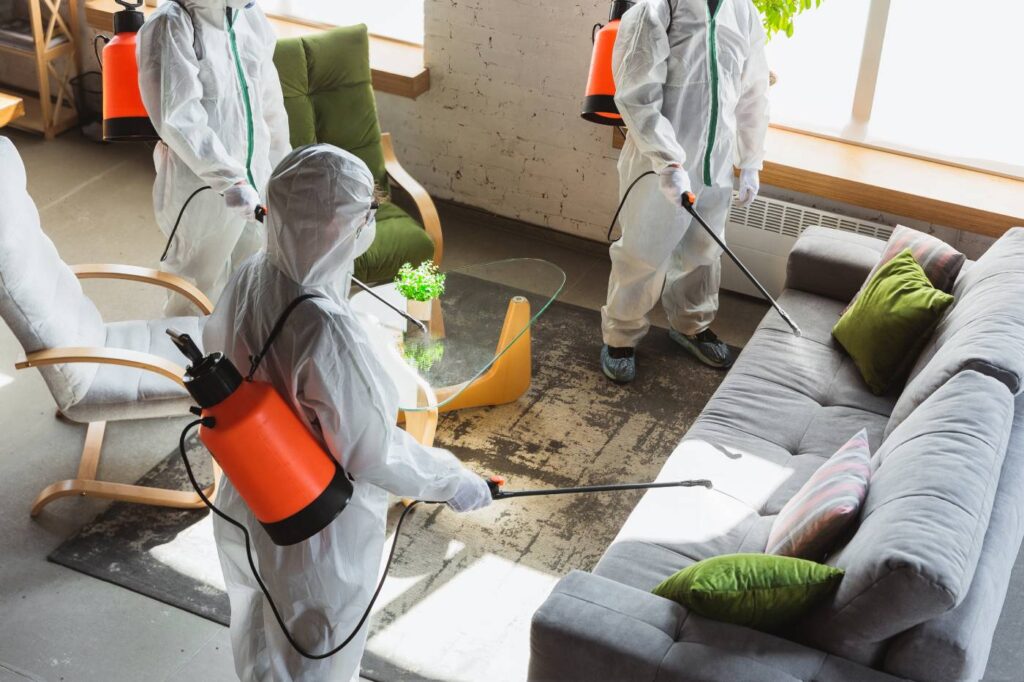
Mold testing plays a crucial role in ensuring indoor air quality and protecting property from structural damage The next important step after sampling is understanding the lab results Mold test results offer detailed insights into the types and levels of mold present in a home or business environment For many property owners these reports can appear technical and difficult to interpret However with the right guidance and expertise understanding lab results from Mold Testing can empower clients to take timely and effective action Professional mold remediation companies not only conduct testing but also help interpret the results to provide peace of mind and direction for treatment
The lab process typically begins with the collection of samples which can include air samples surface swabs or bulk materials These samples are sent to a certified laboratory where technicians analyze them under microscopes or through culturing methods The results come back in the form of spore counts mold types and comparison levels between indoor and outdoor samples These figures help determine whether the mold levels indoors are within normal ranges or if they indicate a problem that needs remediation
One of the most common findings in mold lab reports is the identification of mold spore concentrations in the air The most prevalent mold types that show up include Cladosporium Aspergillus Penicillium Stachybotrys and Alternaria Each of these has its own level of risk based on quantity and type Some are considered allergenic while others can be toxigenic The presence of toxigenic mold like Stachybotrys often indicates a more serious issue that requires immediate professional attention Comparing indoor spore counts with outdoor baselines is critical because mold exists naturally in the environment Elevated indoor levels suggest indoor mold growth rather than mold that has blown in from outside
Understanding the species listed in the lab report is vital Cladosporium for example is common and generally low-risk but can trigger allergic reactions in sensitive individuals Aspergillus and Penicillium can cause respiratory issues especially in people with weakened immune systems On the other hand Stachybotrys also known as black mold is often associated with water damage and is a potential health hazard These molds thrive in different conditions and their presence gives clues about hidden moisture issues and contamination patterns
Another aspect of lab results includes the method of analysis Some labs use direct microscopy where spores are identified visually Others use culturing techniques which allow for mold to grow over a period to identify the species These methods help determine not just the quantity but also the viability of the spores Meaning are they dead or capable of reproducing This distinction is important in shaping the remediation strategy Live spores pose an ongoing threat and must be removed completely while dead spores can still cause allergic reactions if not cleaned thoroughly
Mold test results may also show colony-forming units per cubic meter or CFU m³ which quantify the amount of mold in the air A high count may correlate with a strong musty odor or visible mold while a low count may indicate a hidden issue For this reason interpreting the numbers should always be done with professional input because normal levels can vary by region season and building structure A number that might be concerning in one context may be completely normal in another
Professional interpretation of lab results helps clients understand whether they need immediate remediation or if monitoring is sufficient For example a report might show slightly elevated levels of Penicillium but no signs of moisture damage In such a case the mold expert might recommend enhanced ventilation or dehumidification rather than a full-scale cleanup On the other hand if Stachybotrys is found even in small amounts remediation is typically advised due to the health risks associated with this strain of mold
Another benefit of professional interpretation is that it provides a baseline for post-remediation verification Once mold has been removed and moisture issues addressed follow-up testing should show a significant drop in spore counts Post-remediation lab reports help verify that the cleanup was effective and that the environment has returned to a safe state This final step is essential not only for health but also for insurance documentation and property resale value
Beyond spore counts and species identification lab reports can sometimes include air quality indicators such as particulate matter and humidity readings When combined these data points create a comprehensive picture of the indoor environment For customers these insights help highlight the importance of addressing mold holistically Mold is often a symptom of broader issues like poor ventilation roof leaks or plumbing problems Understanding what the test results reveal allows for smarter long-term solutions rather than short-term fixes
Our professional mold testing services ensure clients receive not only accurate lab results but also expert consultation on what the data means We guide homeowners and business owners through every detail of the report explaining each mold type and how it impacts air quality and health Our team uses this data to create custom remediation plans tailored to the unique needs of each property Whether the concern is an isolated mold patch or widespread contamination our experts turn complex lab results into actionable solutions
Choosing a certified and experienced mold testing provider makes all the difference in how lab results are interpreted and acted upon With advanced equipment and a clear understanding of microbial behavior our technicians pinpoint problem areas quickly and help clients understand the source of contamination This proactive approach ensures that the mold problem is fully addressed not just masked Our services include not just testing but complete transparency and support throughout the entire process
Lab results are more than just numbers on a page They are the foundation of informed decision-making and strategic remediation When homeowners and property managers understand their mold testing reports they gain the power to take control of their indoor environments Our detailed consultations and clear explanations empower clients with the knowledge they need to maintain mold-free living spaces now and in the future
Conclusion:
Understanding lab results from mold testing is essential for taking meaningful action against indoor mold growth Lab reports provide a scientific snapshot of the air and surfaces within a property but it is the expert interpretation of these results that leads to real solutions From identifying dangerous mold types to quantifying exposure levels and determining the source of contamination every data point plays a role in protecting health and property Our professional mold testing and inspection services offer clients accurate results clear explanations and effective remediation strategies Trust us to turn complex mold reports into peace of mind and long-term safety for your home or business .

